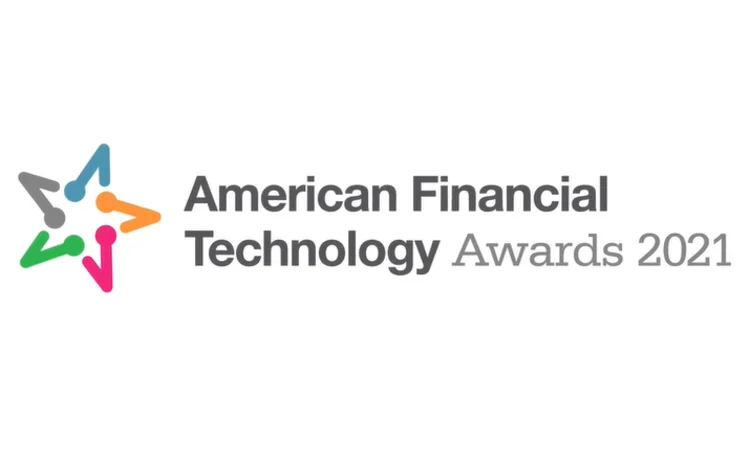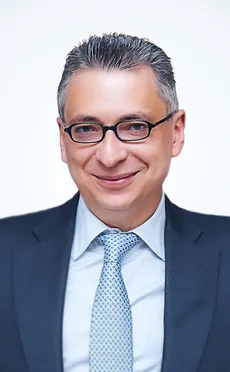AFTAs 2021 Winners' Circle: CompatibL
CompatibL takes a new approach to an old problem.


Princeton, NJ-based CompatibL won the best new technology introduced over the last 12 months (trading and risk) category in the 2021 American Financial Technology Awards. Victor Anderson chats to Alexander Sokol about his firm’s recent work around leveraging machine learning technology to help clients extrapolate more pertinent and accurate risk measures, especially in the wake of the Covid pandemic where historical data and models did not exist.
WatersTechnology: CompatibL won this award on the back of its machine learning-based approach to market generators, introduced to help capital markets firms produce more accurate risk measures in the wake of the Covid pandemic. Can you tell me a bit about the new approach and how it came about?
Alexander Sokol, founder and executive chairman, CompatibL: Risk models are based on historical data and risk horizons are the times in the future when risk is measured and managed. The length of historical time-series [data] necessary to measure risk has to be longer than the horizon for which you are measuring. For example, you cannot use one day of data to predict the next 30 years into the future. The data also has to be relevant to today’s risk―the last few years of the pandemic era are very different to anything that came before it. For many risk and investment management applications―including credit risk, limit risk, insurance reserves and macro investing―the investment horizon is measured in years and decades. The problem is that we are limited to the past few years when it comes to generating accurate pandemic-era data. The technology underpinning the CompatibL Risk Platform is based on my research, the research of CompatibL’s quant research team and that of Alexei Kondratyev while he was at Imperial College London, on applying machine learning to generate accurate risk measures from limited data for long time horizons.
WatersTechnology: Specifically what problems does the new approach solve for its clients and how does it go about solving those problems?
Sokol: The way machine learning technology addresses this problem is that it is able to combine data from, for example, different currencies (in the context of interest rates) and different credit names (in the context of credit spreads) in a way that preserves the individuality of the currency or credit name. In traditional risk management practices, either you use data from the individual name or currency or you combine all the data, which then becomes the average for that name or currency. The problem is that no one wants risk management for average currencies or names―they want individual risk. Machine learning makes it possible to combine data for disparate names (and currencies), while preserving the individuality of each name. It is able to do this because it does not interpolate or aggregate the data―it “reasons” with the data.
WatersTechnology: To what extent do you believe machine learning technology will be used to calculate risk measures across the industry going forward? What are the advantages of using machine learning models over traditional models to calculate risk measures?
Sokol: We absolutely believe that machine learning is a transformative technology that will revolutionize not only risk but all front-office functions as well. I’m confident that this transition will happen by the end of this decade, where machine learning won’t be just a tool, but the preferred way of addressing front-, middle- and back-office problems.
Machine learning replaces unsophisticated algorithms that aggregate and interpolate data and produce risk averages, with reason. For example, when it identifies two similar currencies, it combines their data, but it does so in a rigorous, logical way. This unique combination of rigor and perceptiveness is a huge advantage [compared with traditional models].
WatersTechnology: To what extent does the technology genuinely learn in terms of becoming faster, more accurate and more experienced when dealing with problems it has seen before?
Sokol: The great thing about machine learning is that the more data it has, the more accurate it becomes. It doesn’t necessarily become faster, but we have the cloud [for performance], and machine learning technology is always cloud-based. What’s more important than speed is that [machine learning] can be as precise as the amount of data it has, and it doesn’t over-interpret or simplify the data. Unlike with other techniques where you select in advance how precise you want to be, machine learning continually evolves where it can provide results from minimal data, which then become more accurate when more data is provided.
WatersTechnology: What can we expect from CompatibL and the CompatibL Risk Platform going forward? What’s your focus for next year?
Sokol: Machine learning is rapidly becoming the standard in trading and risk applications and we’re happy that our work over the past year toward this goal has been recognized. Our market generator was the first vendor-produced limit management model in the industry and we’re currently working on a number of other initiatives that we’re excited about. We will be unveiling new machine learning software models during 2022 and we believe that this year will be amazing for machine learning.
Only users who have a paid subscription or are part of a corporate subscription are able to print or copy content.
To access these options, along with all other subscription benefits, please contact info@waterstechnology.com or view our subscription options here: http://subscriptions.waterstechnology.com/subscribe
You are currently unable to print this content. Please contact info@waterstechnology.com to find out more.
You are currently unable to copy this content. Please contact info@waterstechnology.com to find out more.
Copyright Infopro Digital Limited. All rights reserved.
As outlined in our terms and conditions, https://www.infopro-digital.com/terms-and-conditions/subscriptions/ (point 2.4), printing is limited to a single copy.
If you would like to purchase additional rights please email info@waterstechnology.com
Copyright Infopro Digital Limited. All rights reserved.
You may share this content using our article tools. As outlined in our terms and conditions, https://www.infopro-digital.com/terms-and-conditions/subscriptions/ (clause 2.4), an Authorised User may only make one copy of the materials for their own personal use. You must also comply with the restrictions in clause 2.5.
If you would like to purchase additional rights please email info@waterstechnology.com
More on Awards & Rankings
Witad Awards 2025: Risk professional of the year—Anne Leslie, IBM Cloud
Anne Leslie, cloud risk and controls leader for EMEA at IBM, wins risk professional of the year in the 2025 Women in Technology and Data Awards.
Witad Awards 2025 winner’s interview: Maureen Downs (Connamara Technologies)
Video interview with Connamara Technologies co-founder, and winner of the trailblazer vendor category in the 2025 Witad Awards, Maureen Downs
Buy-Side Technology Awards 2024 winner’s interview: FactSet
Video discussion on FactSet’s trio of wins in the 2024 BST Awards
Witad Awards 2025: Vendor professional of the year (business development)—Ripple Bhullar, Kyndryl
Ripple Bhullar, vice president, head of US capital markets and diversified, at Kyndryl, wins vendor professional of the year (business development) in the 2025 Women in Technology and Data Awards.
Witad Awards 2025: Technology leader of the year (vendor)—Mary Cecola, Broadridge Financial Solutions
Mary Cecola, CTO for asset management at Broadridge Financial Solutions, wins technology leader of the year (vendor) in the 2025 Women in Technology and Data Awards.
Witad Awards 2025: Trailblazer (Lifetime achievement) award (vendor)—Maureen Downs, Connamara Technologies
Maureen Downs, co-founder and chair of Connamara Technologies, wins the Trailblazer (Lifetime achievement) award (vendor) in the 2025 Women in Technology and Data Awards.
Witad Awards 2025: Legal/compliance professional of the year—Devi Shanmugham, Tradeweb
Devi Shanmugham, global head of compliance at Tradeweb, wins legal/compliance professional of the year in the 2025 Women in Technology and Data Awards.
Witad Awards 2025: Technology innovator of the year (end-user)—Ruchi Acharya Saraswat, RBC Capital Markets
Ruchi Acharya Saraswat, managing director, head of strategy and transformation, business and client services technology at RBC Capital Markets, wins technology innovator of the year (end-user) in the 2025 Women in Technology and Data Awards.



